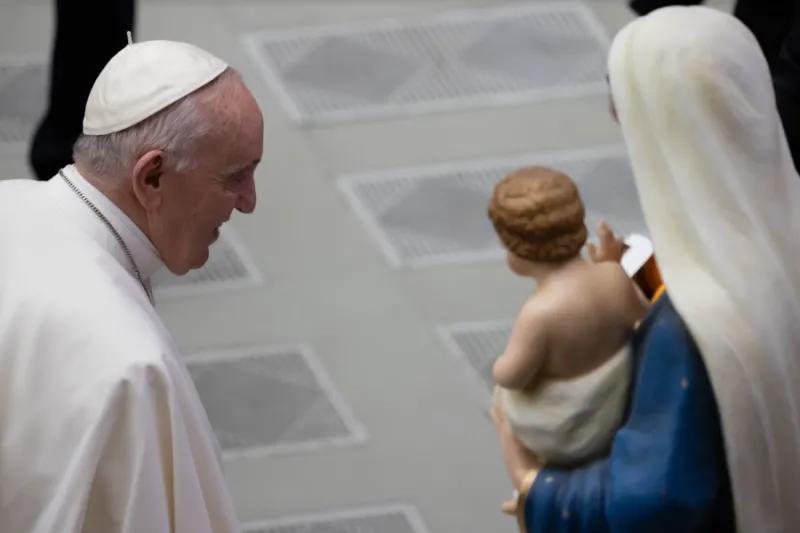
Vatican City, May 3, 2022 / 09:35 am (CNA).
Pope Francis’ prayer intention for the month of May is that young people will follow the example of the Virgin Mary and live a faith-filled life.
“Let us pray, brothers and sisters, so that all young people, called to live life to the fullest, may discover in Mary’s life the way to listen, the depth of discernment, the courage of faith, and dedication to service,” he said in his video for May 2022.
Let us #PrayTogether so that all young people, called to live life to the fullest, may discover in Mary’s life the way to listen, the depth of discernment, the courage of faith, and dedication to service. #PrayerIntention pic.twitter.com/Sk9MyIEZOC
— Pope Francis (@Pontifex) May 3, 2022
The video, published on May 3, was promoted by the Pope’s Worldwide Prayer Network, which raises awareness of monthly papal prayer intentions.
In the video, the pope’s message was accompanied by images of a girl drawing a picture of the Virgin Mary and Child Jesus. As she works on the image, her grandfather approaches with a package, which she opens to discover a box of paints and paintbrushes.
“When I think of a model with whom young people can identify with, our Mother, Mary, always comes to mind: her courage, the way she knew how to listen, and her dedication to service,” the pope said.
“She was courageous and determined to say ‘yes’ to the Lord. You young people, who want to build something new, a better world, follow her example, take risks,” he urged.
The pope also pointed out the important role of grandparents, encouraging young people to “listen to the words of grandparents.”
“In those words of grandparents, you will find a wisdom that will take you beyond the issues of the moment,” he said. “They will provide an overview of your concerns.”
“Don’t forget,” he said, “that in order to follow Mary you need to discern and discover what Jesus wants from you, not what you might think you can do.”
During the month of May, Pope Francis has also asked Catholics to pray the rosary daily for peace, especially in light of the Ukraine war.
If you value the news and views Catholic World Report provides, please consider donating to support our efforts. Your contribution will help us continue to make CWR available to all readers worldwide for free, without a subscription. Thank you for your generosity!
Click here for more information on donating to CWR. Click here to sign up for our newsletter.




Be with us O Mary along the way – Guide every step we take.